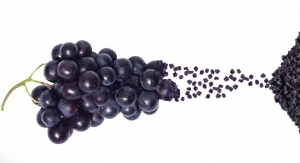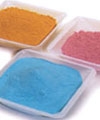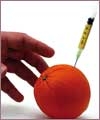Joanna Cosgrove01.01.09
Bar Basics
It’s not easy to strike a balance between good nutrition and good taste.
By
Joanna Cosgrove
Online Editor
 |
Maintaining bar texture and flavor after the bar leaves the manufacturing line is the most common challenge of bar formulating. “We often refer to this as maintaining ‘first day freshness’ and it’s not unlike the challenge faced in all baked goods,” acknowledged Max Maxwell, market analyst, Glanbia Nutritionals of Monroe, WI. “Most nutrition bars are not baked at all but extruded or formed in a cold state.”
When it comes to utilizing nutrient premixes, bar formulators must take several factors into account during the product development stage, according to Ram Chaudhari, PhD, FACN, CNS, senior executive vice president and chief scientific officer of Fortitech, Schenectady, NY. “The challenges associated with premix formulations that incorporate multiple nutrients include the type of finished product as well as the desired taste, flavor and color of the finished product, solubility, bioavailability, pH level, safety/toxicity, interactions among various ingredients and bioavailability and stability of the individual ingredients,” he said.
Issues that can affect stability, for instance, include temperature, pH, oxygen, light and moisture; to name a few. “Among the many factors that can contribute to minimizing interactions, a manufacturer can separate vitamins and minerals into two individual premixes, or encapsulate certain vitamins or minerals or utilize a particular form of a specific ingredient (e.g., iodine’s ingredient form may be potassium iodide, magnesium’s may be magnesium phosphate, zinc’s may be zinc oxide, copper may be copper gluconate and calcium’s could possibly be tricalcium phosphate, dependent upon what other ingredients are utilized in the premix). Additionally, inclusion of most reactive nutrients can be stabilized via nanotechnology if warranted,” Mr. Chaudhari said.
Protein bars represent an area of especially difficult balance, especially when the goal is to add as much protein to the bar as possible. For instance, in some cases protein bars targeted for body builders may include as much as 50% protein. “One of the misconceptions about nutrition bar formulation is that including protein has to be difficult. Adding five grams of protein results in a bar that is a ‘good source of protein’ and going to 10 grams of protein enables you to offer an ‘excellent source of protein,’” said Mr. Maxwell. “With 50 grams, the most popular size of nutrition bar, it is relative to formulate at the 10 or 20% protein inclusion level. It is also possible to blend proteins to optimize flavor, texture and price for the protein portion of the bars.” To that end, Glanbia created Blends of Whey and Soy Proteins (BarGAIN) so bar makers could get an ideal blend of these two base proteins for their nutrition bars.
In addition to the protein conundrum, Mr. Chaudhari pointed out another formulating misconception: that all of a bar’s necessary vitamins can be added at the same stage of the formulation process. “For example, iron dry-blended into the finished product might result in a better color than it would if it was added during the liquid stage. A pro-oxidant like iron will react with lipids, which will lead to rancidity,” he said. “Certain nutrients that are known to degrade under heat—vitamin C, D and thiamine, for example—may be sprayed onto the finished product rather than integrated during processing.”
Another misconception, he said, is that any nutrient can be used. “In reality it is the various market forms of a particular nutrient that must be fully investigated for its ability to support a particular label claim as well as how it affects the taste of the product,” he said.
Mr. Chaudhari added that the most crucial aspect of bar formulating is “understanding the stability characteristics of nutrients, together with an understanding of their possible interactions with other ingredients enables the product formulator to make an estimated guess as to the rate of addition of each nutrient to be added to the food.
“The only way to confirm the accuracy of this estimate is to evaluate required levels, at regular intervals after processing over a period of time equivalent to their effective ‘use by’ date,” he said. “Macronutrients like carbohydrates, simple and complex, would have a protective effect on certain nutrients like vitamins A and B, etc. Additionally, fats and proteins would be positive in stabilizing nutrients added to the finished product.”
Ingredient Trends: What’s Hot Now
Protein, vitamins and minerals are perennial nutritional bar ingredients, but according to Fortitech’s Mr. Chaudhari and Glanbia’s Mr. Maxwell, other more exotic ingredients have emerged as current popular favorites as well.
“Superfruits such as açai, goji berry, mangosteen and pomegranate will continue to increase in popularity due to their perceived antioxidant content and the role they play in overall health and wellness,” said Mr. Chaudhari.
Mr. Maxwell concurred and added that “Among the hottest ingredients for inclusion in nutrition bars are antioxidant fruits like pomegranate and blueberry.”
Mr. Chaudhari noted that visitors to Fortitech’s website have increasingly shown an interest in developing more products that address specific long-term health trend issues, such as cardiovascular disease, diabetes, cognitive heath, energy, weight management, satiety, eye health, digestive health and meal replacement options. “I believe that we are also going to see more products targeted toward women with formulations that focus on a wide range of concerns, from osteoporosis to PMS to menopause,” he said. “Ingredients that are growing in popularity and address these conditions, as well as a roster of others, include: vitamin D, calcium, magnesium (which will be getting more attention as continuing research brings to light the many benefits of this mineral), zinc, omega 3s, fiber, prebiotics, CoQ10, soy, whey proteins (and) antioxidants.”
Cognitive health represents another area of premix interest for Fortitech. “A premix that can address enhanced cognitive health could include antioxidants, such as carotenoids, vitamin C and vitamin E; micronutrients such as the B vitamins and folate; fatty acids such as omega 3s, citicoline and phosphatidylserine (PS); and botanicals such as ginkgo biloba, ginseng root and grapeseed extract,” said Mr. Chaudhari.
On the whole, the ongoing, industry-wide effort to develop bars as health, nutrition, energy and meal replacement options has invigorated the segment toward ongoing innovation. “The availability of healthy and nutritional bars in various distribution channels (i.e., supermarkets, food service, health and sports clubs) has widened, and the market is ready for bars with new benefits and improved taste and texture,” said Mr. Chaudhari.
Looking forward, Mr. Maxwell predicted that the distinction between nutrition bars, cereal bars and granola bars will continue to blur. “General Mill’s Fiber One lines and Kellogg’s Special K protein bars have been the biggest success stories in bars this past year,” he concluded.





















